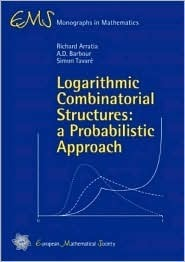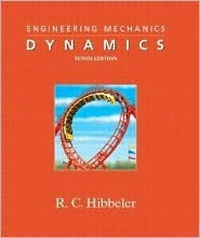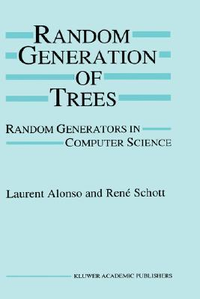Logarithmic Combinatorial Structures: A Probabilistic Approach

Summary
The elements of many classical combinatorial structures can be naturally decomposed into components. Permutations can be decomposed into cycles, polynomials over a finite field into irreducible factors, mappings into connected components. In all of these examples, and in many more, there are strong similarities between the numbers of components of different sizes that are found in the decompositions of "typical" elements of large size. For instance, the total number of components grows logarithmically with the size of the element, and the size of the largest component is an appreciable fraction of the whole. This book explains the similarities in asymptotic behavior as the result of two basic properties shared by the the conditioning relation and the logarithmic condition. The discussion is conducted in the language of probability, enabling the theory to be developed under rather general and explicit conditions; for the finer conclusions, Stein's method emerges as the key ingredient. The book is thus of particular interest to graduate students and researchers in both combinatorics and probability theory. Distributed within the Americas by the American Mathematical Society.
Similar Books
-
 Engineering Mechanics: Dynamics
Engineering Mechanics: Dynamicsby Russell C. Hibbeler
-
 Classical Recursion Theory (Studies in Logic and the Foundations of Mathematics)
Classical Recursion Theory (Studies in Logic and the Foundations of Mathematics)by Piergiorgio Odifreddi
-
 Formulas for Stress, Strain, and Structural Matrices
Formulas for Stress, Strain, and Structural Matricesby Walter D. Pilkey
-
 Feasible Computations and Provable Complexity Properties
Feasible Computations and Provable Complexity Propertiesby Juris Hartmanis
-
 The Simplex Method: A Probabilistic Analysis
The Simplex Method: A Probabilistic Analysisby Karl Heinz Borgwardt
-
 Nonlinear Programming: Sequential Unconstrained Minimization Techniques
Nonlinear Programming: Sequential Unconstrained Minimization Techniquesby Anthony V. Fiacco
-
 Random Generation of Trees: Random Generators in Computer Science
Random Generation of Trees: Random Generators in Computer Scienceby Laurent Alonso
-
 Interior Point Methods of Mathematical Programming
Interior Point Methods of Mathematical Programmingby T. Terlaky